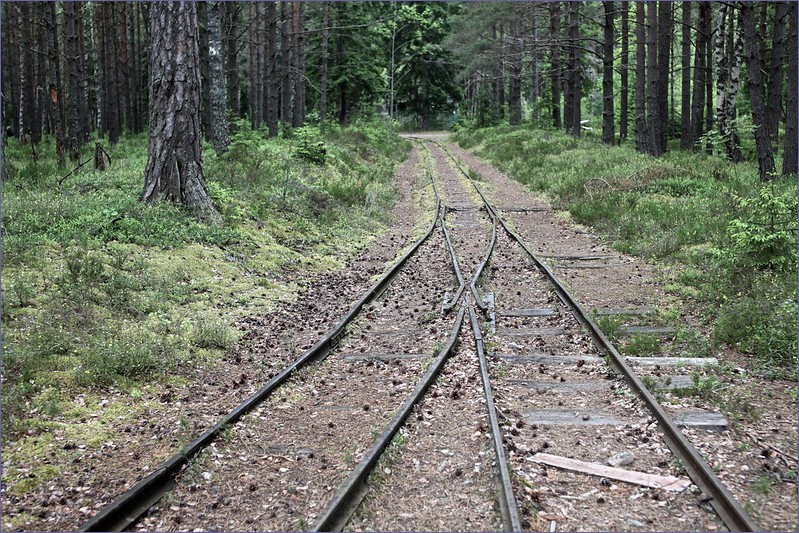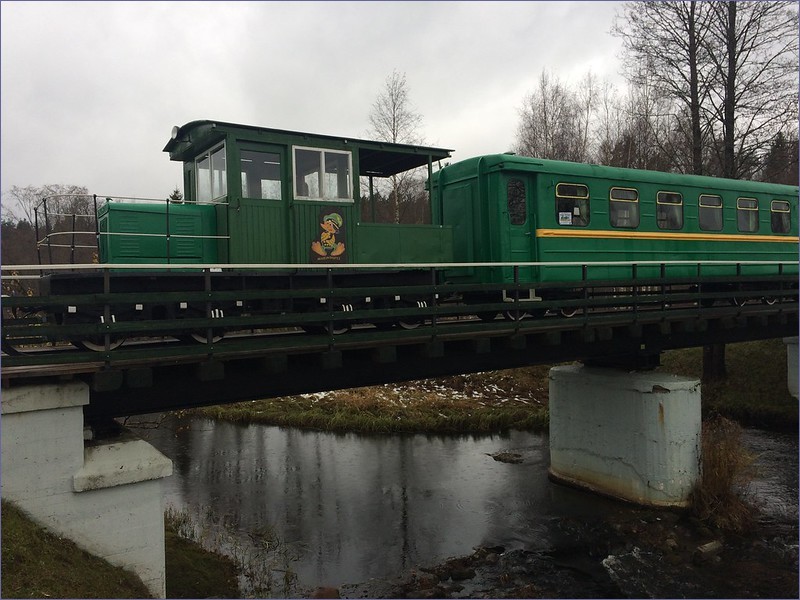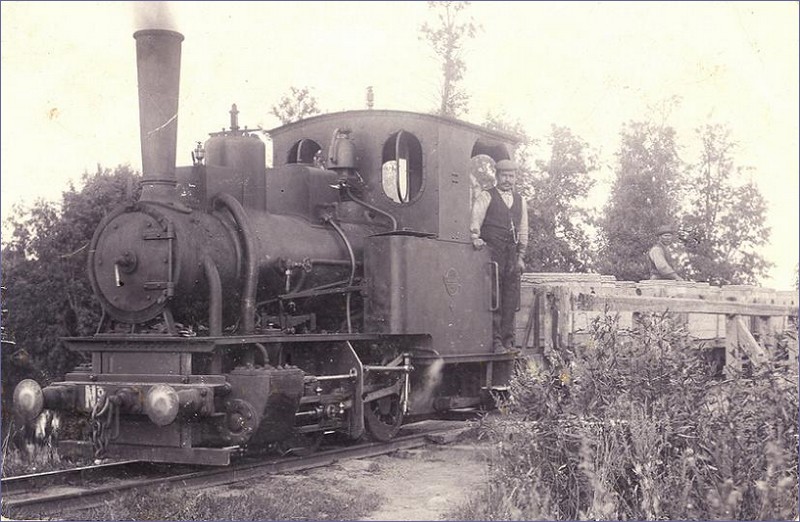There are three operational narrow-gauge railways in Estonia but these railways operate very rarely. Many forest railways were closed in the first half of the 21st century. Some of narrow-gauge lines were regauged to broad gauge.
Narrow-gauge railways in Estonia
Railway museum in Lavassaare – 17 kilometers from Parnu is located interesting railway musem in Lavassaare. At the outdoor exhibition you can see more than 70 different railway vehicles – steam locomotives, old passenger and freight wagons and technical vehicles. An exhibition focused on the history of narrow-gauge railways running through the territory of today’s Estonia has also been prepared for visitors – documents, photos, railway uniforms, etc.
An additional attraction is a narrow-gauge train that runs every Saturday from June to August (5 times a day) and every Saturday in September (3 times a day). The train route connecting the villages of Müramaa and Lavassaare is only two kilometers long and the journey takes only 10 minutes. The train is hauled by a steam locomotive, or by a diesel locomotive.
The museum is open every day from June to August. In September only on Saturday and Sunday. On the remaining days of September and in October, admission is only for groups after prior reservation. Entrance tickets are not expensive. Museum can be reached by suburban buses from Parnu. The bus ride from Parnu takes over 40 minutes.
Railway on Naissaar island – a Naissaar Island is a small Estonian island located 8.5 km from Tallinn (according to other sources, 10 km). The island itself has a very interesting history. In 1917, rebellious sailors created a mini-state there called the Soviet Republic of Naissaar. Today, tourists can see the former naval base of the USSR, and the island has been transformed into a nature reserve.
There are ferries from Tallin to Naissar, and one of its attractions is the narrow-gauge railway that crosses the island from north to south. The train, composed of a diesel locomotive and an open wagon, takes travelers from the port to the interior of the island. I don’t know the details about the transport, but it is a typical tourist railway, passing through the forest. The island is approximately 11 km long and 4 km wide, so it is an ideal place for a one-day trip from the Estonian capital. On Naissar, apart from the railway, you will find a lot of souvenirs of the Soviet military base – abandoned buildings and bunkers, old vehicles, an abandoned shooting range, etc. The trip is not the cheapest, but it is worth spending some money on the trip to feel like you were in the times of the USSR.

Short museum railway in Avinurme – Avinurme is a tiny town, which is currently not served by trains. It lies near the route of former narrow gauge railway Sonda – Mustvee, on which passenger trains run during 1926-1972. The line ended in the same way as many other narrow-gauge lines in the Baltic countries – line was dismantled after traffic closure.
In recent years a very short section of former narrow gauge railway was rebuilt and preserved rail vehicles were renovated. On selected days from May to October you can take a short ride by nostalgic train. Length of rebuild section of narrow gauge railway is only 178,5 meters, maybe in the future it will be extended to 1 km. Throughout the year the train stands as an exhibit on the remains of a former viaduct on the road on the outskirts of Avinurme.

Narrow-gauge railways in Estonia in the past:
Kunda cement factory – the first narrow-gauge railway in Estonia, built 1886.
Pärnu – Mõisaküla – Valga – opened 1896 (121 km)
Tallinn –Lelle – Türi– Viljandi – Mõisaküla – 196 km long line opened in several stages between 1897 and 1900. Short branch line from Türi to Paide, 14 km, opened 1901.
Valga – Mõniste – Ape – Alūksne – Gulbene line – opened in 1903. Section Alūksne – Gulbene in Latvia is operational – narrow-gauge trains run daily.
Liiva – Vääna – 23 km long line constructed as a part of Peter the Great’s Naval Fortress’ railway network around Tallinn. The line to Vääna was built in several stages in 1913.
Paide – Tamsalu – built during World War I as a military railway, opened to public passenger and freight traffic in 1918. Total lenght of the line was 48 km.
Riisselja – Orajõe – 44 km long line opened 1923. In 1928 it was extended to Ikla, on the border to Latvia (5 km). In 1942 1 km long extension across the border to Ainazi, terminus of the 750 mm (2 ft 5+1⁄2 in) gauge Valmiera supply railway.
Lelle – Pärnu , 71 km, opened 1928. 27-km long branch from Viluvere to Vändra.
Rapla – Virtsu, 96 km, opened 1931.
Järvakandi glassworks – an industrial line 15 km long.
Jägala – Raasik – saw mill railway
Kärdla Kalevavikur harbor railway
Harbor railway of Loksa brick factory
Ulgas Phosphorite Mine (and Cape Koljunuk Port) railway
Meleski glass factory branch line
Narva Kreenholm Puuvillabrikku branch line
Rakke lime factory and Kamarik quarry railway
A sideline of the textile industry of Sindh
Tallinn Põhja Paper and Puupapabrikute A.Ü (Fahle) branch line
Tamsalu lime factory branch line
Saku Brewery branch line
Ulila peat railway network in Laugesoo
Ellamaa peat railway network in Ellamaa bog
Peat railways network of Puhja Sangla peat briquette industry
Related articles:
